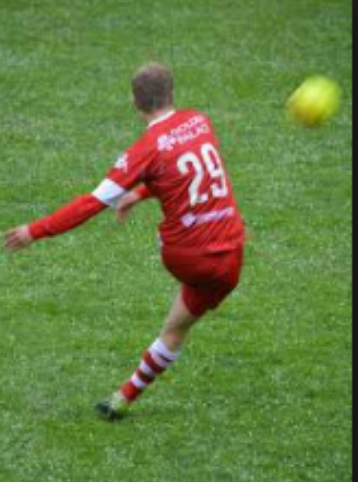Have you seen this?
/Patterns. That’s what it’s about a lot of times. Dr Allen and I are always looking for patterns or combinations of muscles which work together and seem to cause what appear to be predictable patterns; like a weak anterior compartment and a weak gluteus maximus, or a weak gluteus medius and contralateral quadratus lumborum.
Here is an interesting story and a new combination that at least I have never seen before
I had a 11-year-old right footed soccer player from my son’s soccer team coming to see me with bilateral posterior knee pain which began during a soccer game while he was “playing up” on his older brothers team. He did need to do a lot of jumping as well as cutting. He is generally a midfielder/Forward. Well experienced player and “soccer is his life“.
My initial thoughts were something like a gastroc dysfunction or a Baker’s cyst. On examination, no masses or definitive swelling noted behind either knee. He did have tenderness to moderate degree over the right plantaris and tenderness as well as 4/5 weakness of the left popliteus. There was a loss of long axis extension of the talo crural articulations bilaterally with the loss of lateral bending to the right and left at L2-L3.
If you think about the mechanics of the right footed kicker (and try this while kicking a soccer ball yourself) it would be approximately as follows: left foot would be planted near the ball and the tibia/femur complex would be internally rotating well the foot is pronating and the popliteus would be eccentrically contracting to slow the rotation of the femur and the tibia. The right foot will be coming through and plantarflexion after a push off from the ball of the foot firing the triceps surae and plantaris complexes. He would be “launching“ off of the right foot and landing on his left just prior to the kick, causing a sudden demand on the plantar flexors; with the plantaris being the weak link. As the kicking leg follows through, the femur of the stance phase leg needs to externally rotate (along with the tibia) at a faster rate than the tibia (otherwise you could injure the meniscus) the popliteus would be contracting concentrically. A cleat, because it increases the coefficient of friction with the ground would keep the foot on the ground solidly planted and The burden of stress would go to the muscles which would be extremely routine leg and close chain which would include the semimembranosus/tendinosis complex as well as the vastus medialis and possibly gracilis and short adductor, along with the popliteus.
I have to say and all of my years of practice I’ve never seen this combination type of injury before involving these two muscles specifically and am wondering if anyone else has seen this?
Dr Ivo Waerlop, one of The Gait Guys
#footproblem #gait #thegaitguys #soccerinjury #bilateralkneepain #popliteus #plantaris
image credit: https://commons.wikimedia.org/wiki/File:Slide2ACCA.JPG

















